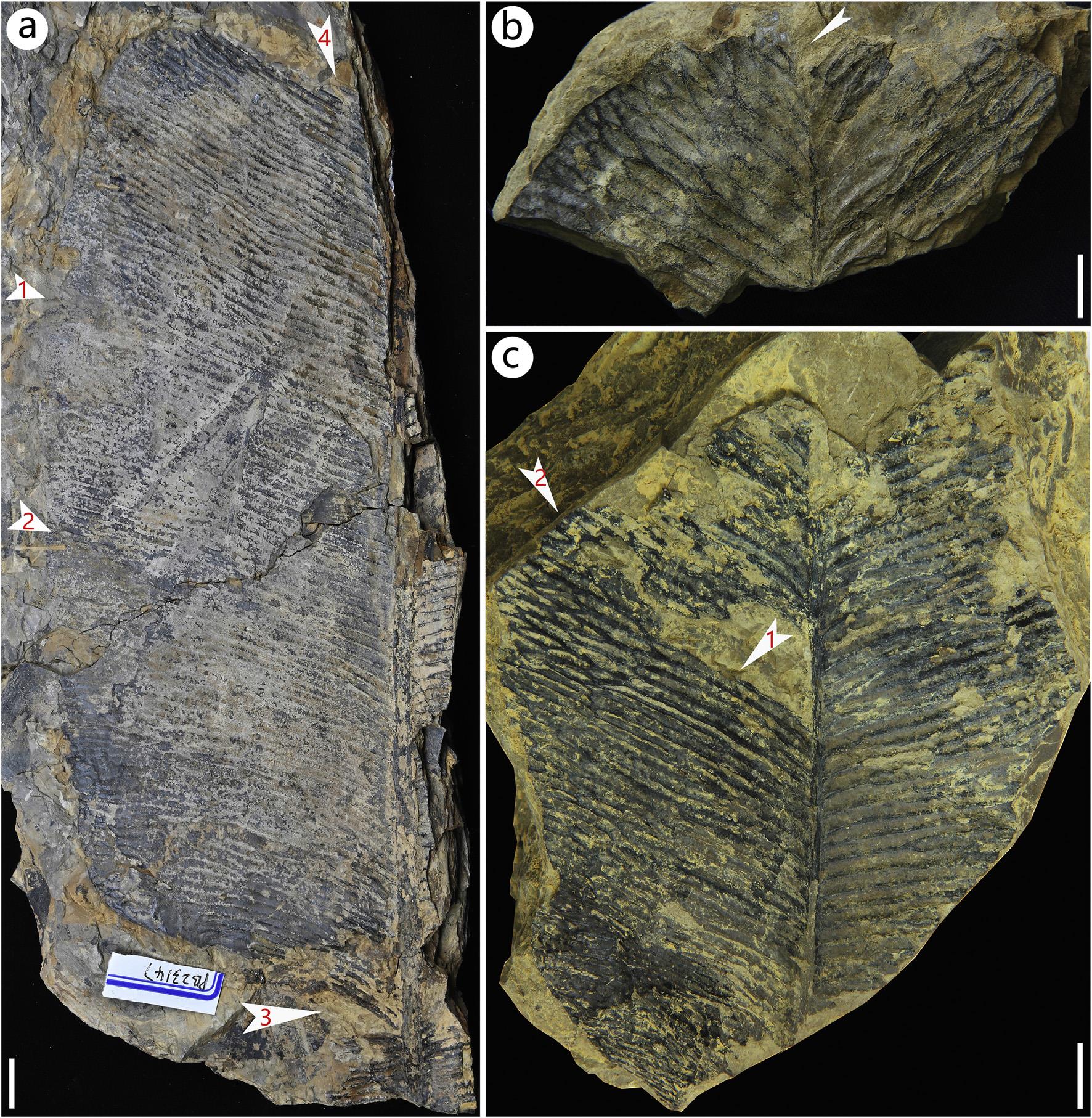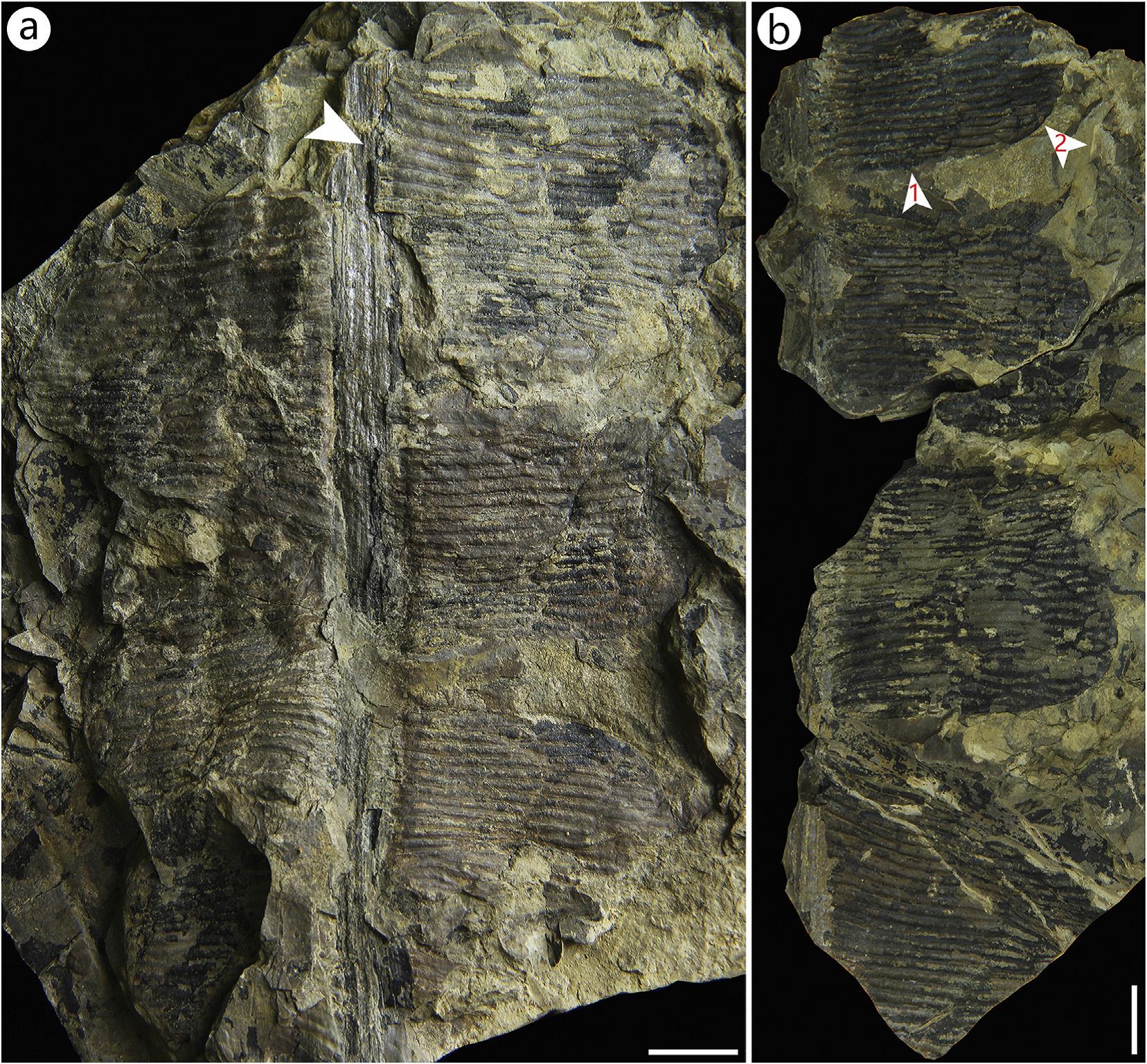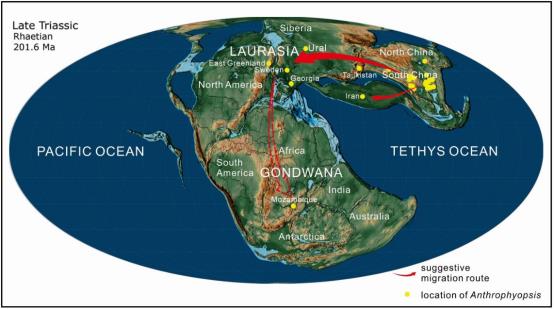Anthrophyopsis Nathorst 1878 is an extinct but representative Late Triassic gymnosperm genus with uncertain systematic affinities and poorly understood morphology and anatomy. Since its earliest report by Nathorst in 1878, this fossil has been documented worldwide. However, the taxonomic statuses and the leaf morphological variation of this fossil plant remain questionable.
Recently, an international research team led by Prof. WANG Yongdong (Nanjing Institute of Geology and Palaeontology, Chinese Academy of Science(NIGPAS) ), collaborated with Prof. Mihai E. Popa from University of Bucharest of Romania, and Prof. ZHANG Tingshan’s team (Southwest Petroleum University of China), has published a new study in international journal Review of Palaeobotany and Palynology.
In this research, we carried out a comprehensive systematic study of Anthrophyopsis and investigated the significance of its tempo-spatial distribution pattern. The team collected several well-preserved fossil material belonging to Anthrophyopsis from the Upper Triassic Xujiahe Formation in Guangyuan City of northern Sichuan Basin, South China. The newly collected specimens show leaves with incisions which even can generate a unipinnate leaf architecture (Figs. 1, 2).
Wang says, “these specimens show various outlines with depths of incision for different leaves, pointing to transitional shapes between entire and lobed margins.” This enables a detailed and updated morphological diagnosis emendation of this fossil at genus and species level. Based on this, a new reconstruction of its type species Anthrophyopsis crassinervis was carried out with emphasis of its heteromorphic leaf morphologies (Fig. 3).
The re-investigation on the global fossil record shows that among 16 species of Anthrophyopsis documented worldwide, only three of them are valid species (including Anthrophyopsis crassinervis, A. tuberculata and A. venulosa). Other four species need further revision, and nine species are invalid.
In addition, Anthrophyopsis has a short stratigraphic range and confined to Upper Triassic sequences, from the Carnian to the Rhaetian, and it has a distinct stratigraphic significance. Anthrophyopsis possibly originated from the South China Block during the Carnian, migrated along the northern frame of the Tethys realm, and finally arrived in Middle East and Europe. The short stratigraphic range of Anthrophyopsis in the Southern Floristic Province (SFP) implies a climate differentiation between the SFP and the Northern Floristic Province (NFP) during the Late Triassic (Fig.4). The limited occurrences of valid Anthrophyopsis species in the Southern Floristic Province of China during the Late Triassic indicate that this genus represents a sensitive stratigraphic and palaeoclimatic marker.
This study was co-sponsored by the National Natural Science Foundation of China, Strategic Priority Research Program (B) of the Chinese Academy of Sciences and the State Key Laboratory of Palaeobiology and Stratigraphy.
Reference: Xu Yuanyuan, Mihai E. Popa*, Zhang Tingshan, Lu Ning, Zeng Jianli, Zhang Xiaoqing, Li Liqin, Wang Yongdong*, 2021. Re–appraisal of Anthrophyopsis (Gymnospermae): New material from China and global fossil records. Review of Palaeobotany and Palynology, 292(3): 104475. DOI: 10.1016/j.revpalbo.2021.104475.


Fig.2 Anthrophyopsis crassinervis from Guangyuan area of northern Sichuan Basin, South China, showing thick midrib with secondary vein meshes and leaf margin with deep incisions

Fig. 3 Morphological reconstructions of Anthrophyopsis crassinervis, showing heteromorphic leaf morphologies.

Fig. 4 Palaeogeographic map showing the distribution of genus Anthrophyopsis around the world during the Late Triassic and its suggested migration routes.
LIU Yun, Propagandist
Email: yunliu@nigpas.ac.cn
Nanjing Institute of Geology and Palaeontology, Chinese Academy of Sciences
Nanjing, Jiangsu 210008, China
Download:
